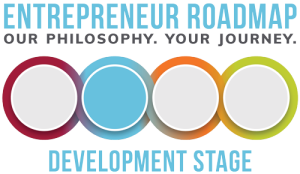3 Steps To Profitably Price Your Product Or Service

 As an entrepreneur, how do you set appropriate prices for your product or service? This can be a difficult decision to make—choose a price that’s too low and you may weaken profits but assign a price that’s too high and you may deter consumers.
As an entrepreneur, how do you set appropriate prices for your product or service? This can be a difficult decision to make—choose a price that’s too low and you may weaken profits but assign a price that’s too high and you may deter consumers.
While there is no one-size-fits-all answer for how to price your products or services, here are three key considerations to point you in the right direction:
Gain In-Depth Insight
As a seller, there are three types of insight you must gain in order to successfully price your product or service.
- First, you must have a clear understanding of how much a customer is willing to pay to solve the problem your solution intends to fix. The most effective means of gathering this information is through customer discovery.
- Next, you must consider your competitors’ pricing and how your solution compares. Do you offer more features, options or value?
- Finally, understand the relationship between quality and price. Do you want to be known for high quality or as the lowest priced solution?
Quantify The Benefits You’re Promising Customers
When pricing your product or service, it often helps to quantify the real savings your solution will offer your customers. Some of these savings will be tangible, allowing you to do research and assign an actual dollar value to them. For example, car manufacturers can communicate the amount of fuel savings, in dollars and cents, customers will enjoy if they purchase the company’s compact car.
On the other hand, some savings are more difficult to quantify, these are called intangible savings. Based on your customer discovery, it will be up to you to determine these values, and how important non-monetary savings are to your audience. For example, a mattress company will need to assign value to a good night’s sleep, while a security alarm company will need to assign value to their customer’s safety and peace of mind.
Let’s imagine you sell an organic snack bar that is priced at 30% more than non-organic snack bars. Although your option costs more upfront, your price should consider the less-immediate, and maybe less obvious, savings your snack bar offers your customers:
- It’s been proven that organic foods retain more nutrients than their non-organic counterparts, leading to better health outcomes for those who consume them. Consider how much the average person spends on doctor visits and medication a year, can your organic product contribute to savings in this department?
- If your snack bar was packed with so many nutrients that the consumer wouldn’t need to buy an extra item or two that they regularly would buy to consume those nutrients, how much money would they save per month? Per year?
- People who eat healthier tend to get more full nights of sleep. How much is a full night of sleep worth to your customer?
Here’s brief video from entrepreneur Marie Forleo which outlines pricing strategies, including the “mattress method” of pricing which offers an excellent example of how to quantify intangible savings to your customers.
Measure Everything!
Measuring what’s most effective and determining what needs improvement is vital to every step of your go-to-market journey, but it’s especially critical when it comes to pricing. As you experiment with your price point, gauge how your changes affect sales metrics, including total revenue, quantity sold, average order amount and order frequency. In addition, keep a close eye on how much your customers stand to save both tangibly and intangibly, by using your product or service.
For more useful tips on getting your venture started the right way, check out JumpStart’s Entrepreneur Roadmap, which includes an in-depth Go-To-Market Strategy Tool and Go-To-Market Strategy Worksheet.
